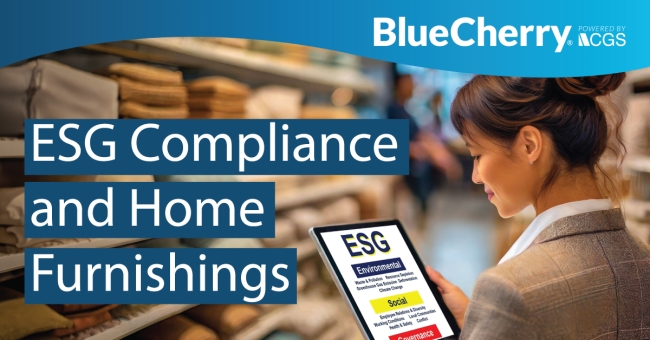Kathleen S.C. Heberger, Responsible Research & Writing LLC, is a writer and researcher specializing in business technology and manufacturing trends. She covers fashion industry IT, advanced materials and supply chain issues.
Topics
ESG Compliance and Home Furnishings

Home goods businesses and their supply chains are challenged to fulfill products faster, under constant price pressure, while managing more requirements behind the scenes.
Case in point: environmental, social and governance (ESG) priorities. Retail customers and governments are releasing new ESG compliance mandates. Major retailers such as Walmart require suppliers to provide detailed product chain-of-custody documentation. The Uyghur Forced Labor Prevention Act (UFLPA) has prompted businesses to diversify sourcing, especially of cotton goods, to be less reliant on China. Those sourcing in China or using Chinese materials must provide U.S. Customs and Border Protection (CBP) with verifiable evidence that nothing was made with forced labor in the Xinjiang Uyghur Autonomous Region. Xinjiang produces 90 percent of Chinese cotton. UFLPA prompted production shifts of cotton sheet sets, towels and other products to suppliers in India and other countries.
Beyond government and retailer pressures, consumers want greater transparency into the supply chains behind home goods they purchase.
- 61% of shoppers are environmentally aware in furniture and décor choices.
- 66% want to make more sustainable home furniture purchases.
Source: SWNS Digital
Supply chain mapping and traceability is now a business necessity to:
- Do business with major retailers
- Ensure good working conditions globally
- Produce more eco-friendly products
- Build trust with suppliers, retail customers and consumers
Process Improvements and Solutions
There are ways to comply with ESG and UFLPA requirements while controlling costs and improving fulfillment speed.
- Use ERP to maintain data to create a supply chain digital twin. This digital representation of all materials, components and suppliers can be used to generate chain-of-custody reports and supply chain maps for retail customers, auditors and government agencies.
- Go faster to market by using integrated PLM and ERP. This technology combination enables seamless handoffs of product information across product development, sourcing/manufacturing and fulfillment. This includes style, costing, BOM, PO and shipping data.
- Get granular, real-time manufacturing details from shop-floor control (SFC) solutions, also called production management technology. Efficiently generate production records, which offer an accurate, verifiable view of manufacturing capacity and output by vendor, down to the production line, individual operator and machine, if needed.
To learn more about process improvements and solutions to achieve better supply chain visibility and ESG compliance, download the eBook, “3 Steps to Grow Home Market Share.”
Kathleen S.C. Heberger, Responsible Research & Writing LLC, is a writer and researcher specializing in business technology and manufacturing trends. She covers fashion industry IT, advanced materials and supply chain issues.

